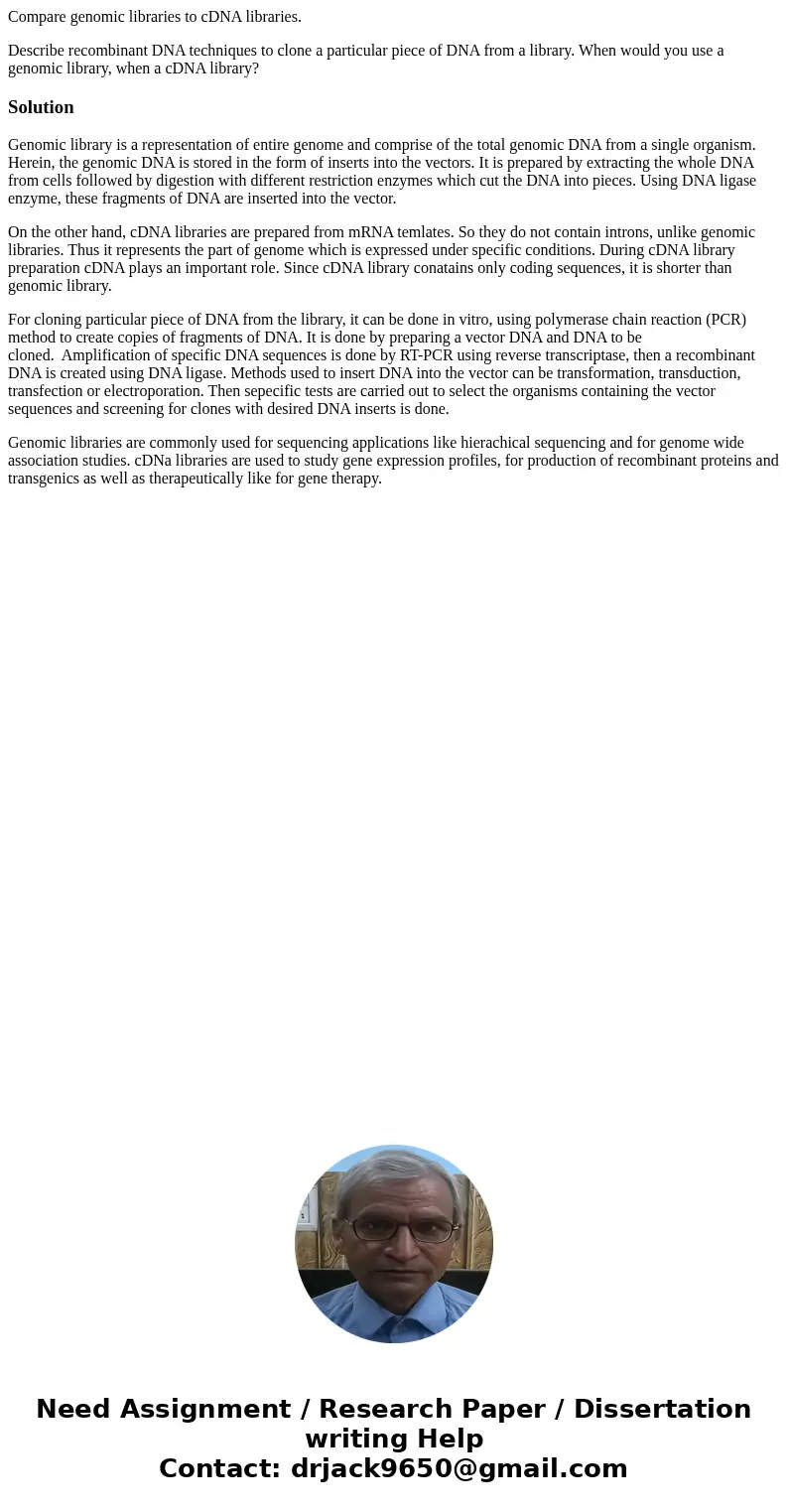Compare genomic libraries to cDNA libraries Describe recombi
Compare genomic libraries to cDNA libraries.
Describe recombinant DNA techniques to clone a particular piece of DNA from a library. When would you use a genomic library, when a cDNA library?
Solution
Genomic library is a representation of entire genome and comprise of the total genomic DNA from a single organism. Herein, the genomic DNA is stored in the form of inserts into the vectors. It is prepared by extracting the whole DNA from cells followed by digestion with different restriction enzymes which cut the DNA into pieces. Using DNA ligase enzyme, these fragments of DNA are inserted into the vector.
On the other hand, cDNA libraries are prepared from mRNA temlates. So they do not contain introns, unlike genomic libraries. Thus it represents the part of genome which is expressed under specific conditions. During cDNA library preparation cDNA plays an important role. Since cDNA library conatains only coding sequences, it is shorter than genomic library.
For cloning particular piece of DNA from the library, it can be done in vitro, using polymerase chain reaction (PCR) method to create copies of fragments of DNA. It is done by preparing a vector DNA and DNA to be cloned. Amplification of specific DNA sequences is done by RT-PCR using reverse transcriptase, then a recombinant DNA is created using DNA ligase. Methods used to insert DNA into the vector can be transformation, transduction, transfection or electroporation. Then sepecific tests are carried out to select the organisms containing the vector sequences and screening for clones with desired DNA inserts is done.
Genomic libraries are commonly used for sequencing applications like hierachical sequencing and for genome wide association studies. cDNa libraries are used to study gene expression profiles, for production of recombinant proteins and transgenics as well as therapeutically like for gene therapy.

 Homework Sourse
Homework Sourse